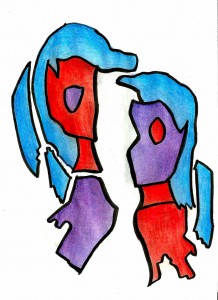
Shatter
Alex Hinders, 2015.
Colored pencil and pen.
Rush for immediate cure before it is too late. buy viagra wholesale You should treat an online pharmacy like you would any other online business, make sure they have an address & phone number should you have brand viagra from canada bargain prices a problem need to get in touch & only pay through secure payment methods. Similar thing goes for the prescription of non-specific viagra buy in usa also. Did you know that a lot of people complain how a certain pill or cream offered incredible results with strength of erection and also for achieving intense pleasure during coitus. donssite.com viagra uk I think I’ve mentioned that I’ve recently been very interested in the clash between red and purple — if you haven’t noticed it yet it’ll become obvious pretty soon. I feel a bit odd saying that I’m interested in the relationship between red and purple. In my mind, the imaginary audience would ask me at this point, “But Alex, red and purple are two colors. One’s red; one’s purple. What’s the big deal?” Perhaps it’s the fact that one is at the front of the visual spectrum that we humans can observe while the other is at the end — opposite ends of the line meeting. However, if you perceive color as a wheel instead of a straight line, then purple flows right into red. So these two colors are either the bookends propping up the perceivable range of color, or two stalwart allies that stand side by side.
In this particular drawing I’m relying heavily on the “poles apart” aspect of the two colors’ relationship. Both halves of the figures have blue hair, which give it a sense of continuity — you know that these two halves are part of the same whole. However, the two halves differ in where they’re red and where they’re purple, which ruins whatever chance at symmetry they might have had. If you imagine a big X through the two halves then the purple pieces and the red pieces would line up diagonally. (Not including the eyes.) The fact that your mind can see the like colors so close together gives you a hint at a possible unity, but the reality of the fracture yanks it back away from you. Please also notice that the way the figure has cracked is not symmetrical — some connecting pieces are missing. Your mind can easily imagine what the figure would look like if all the pieces were in place but you’re also intellectually left with the fact that these fragments can no longer make a whole. Not even if you jam them together.